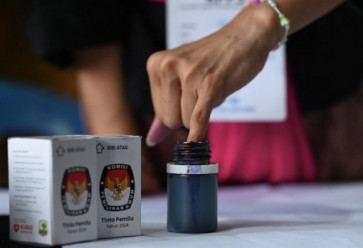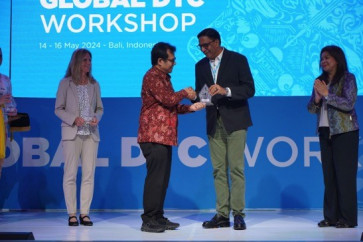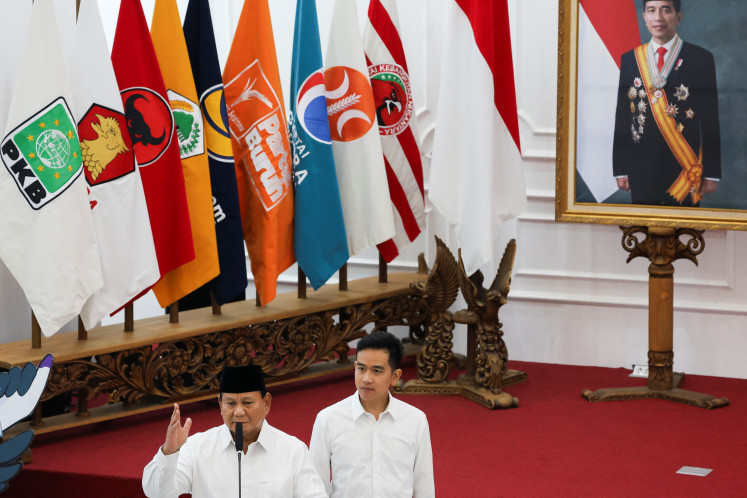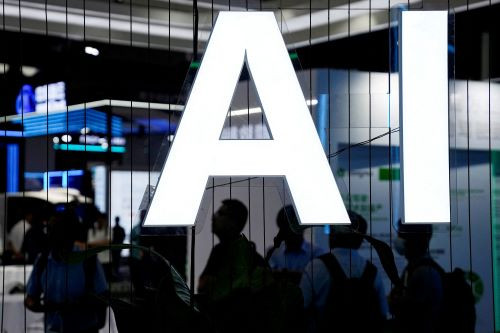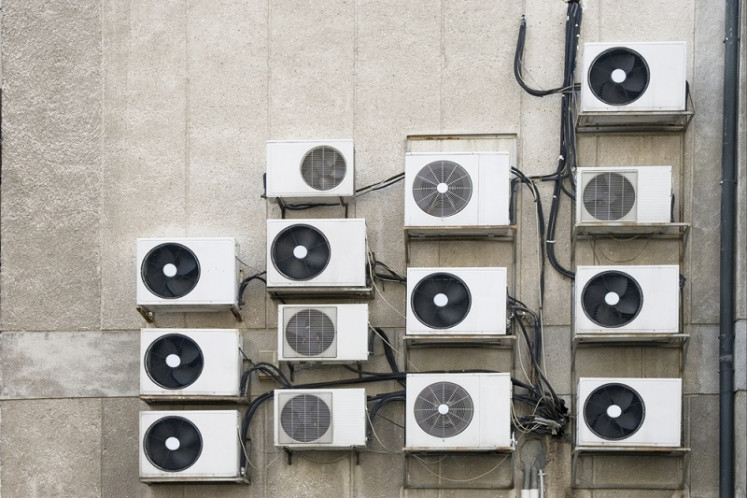How to think about the fuel price hike in Indonesia?
President Susilo Bambang Yudhoyono has submitted a revised budget to the House of Representatives
Change Size

P
resident Susilo Bambang Yudhoyono has submitted a revised budget to the House of Representatives. The budget foresees higher subsidized fuel prices and compensating spending. It is not yet certain the fuel price increases will take place or the revised budget accepted, but we continue to believe higher subsidized fuel prices should form the base case scenario.
Higher fuel prices mean higher inflation (we maintain our 7 percent end 2013 forecast), downward pressure on private sector spending power and reduced net oil imports.
We also expect higher policy interest rates from Bank Indonesia, such that interbank rates rise circa 50bps into end 2013. BI may avoid a larger increase on the grounds that financial markets appear much calmer ahead of this fuel price adjustment than ahead of prior fuel price hikes.
Ultimately Indonesia's prospects and the rupiah should be supported by fuel price reform, but investor uncertainty on policy execution and concerns about the fallout on growth could mean some downward pressure on the currency ahead of the event and a recovery afterward.
Longer term, we continue to believe the rupiah to have more downside than upside risk on the grounds of slower Indonesian growth momentum and an insufficient improvement in the current account deficit.
The planned fuel price adjustment behind the revised central government budget envisages an increase in the price of subsidized gasoline to Rp 6,500 a liter from Rp 4,500 a liter. Subsidized diesel is to be increased to Rp 5,500 a liter from Rp 4,500 a liter.
This still leaves the subsidized fuel price far below the market price of around Rp 9,500 a liter and there is no suggestion of an automatic price adjustment mechanism or liberalization going forward.
We judge the fuel price reforms will not fall foul of politics this year and, allowing time for parliamentary debate, we expect the fuel price increase to be enacted in June.
Part of the rationale for increasing the fuel price ahead of presidential and parliamentary elections in 2014 arises from the desire to reallocate government spending towards low income (voting) households. It is widely recognized that the benefits of the fuel subsidy go disproportionately to the owners of Indonesia's circa 10 million cars in 2012, at the expense of the 150 million plus users of public transport.
The revised budget projects a curtailed subsidy bill of Rp 210 trillion, still up from an original estimate of Rp 194 trillion in the original budget but down from a probable Rp 250 trillion had the fuel price been left unadjusted.
The incremental savings from the fuel subsidy increase equate to about Rp 40 trillion for the half year following a June 2013 fuel price increase. Of this, according to The Jakarta Post, the revised budget channels Rp 12.5 trillion towards social security aid, Rp 11.6 trillion for direct cash aid and 6tn towards infrastructure. The Rp 30.1 trillion in reallocated spending offsets 75 percent of the subsidy cut on the budget in 2013.
The 2013 fiscal deficit is projected by the revised budget to widen to 2.5 percent of GDP from an originally projected 1.7 percent of GDP. The deterioration in the subsidy position relative to the initial budget and increase in offsetting spending is augmented by a Rp 50 trillion reduction in government income tax.
We expect that under spending will lead to a lower fiscal deficit than forecast in the revised budget and maintain our deficit forecast at 2.0 percent of GDP. We expect fuel price hike compensation measures to diminish in 2014 and a full year of subsidy savings to reduce the fiscal deficit to 1.5 percent of GDP in 2014.
The net direct impact on consumer spending power from the subsidy adjustment and the offsetting handouts is 0.2 percent of GDP. The price signal from higher fuel prices should have second round effects on costs and spending, further depressing consumption in favor of saving.
The impact on consumption should fall more heavily on middle income groups who run private motor transport, while low income households relying on public transport should be less affected due to the compensation payments. The drag on consumption should also grow in 2014 as compensation payments dwindle, but election spending by candidates for public office should stop consumption slowing too much over the next 12 months.
The increase in the fuel prices will necessarily impact prices of private and public transport plus other costs. We concur with the government that a rise in fuel prices will push inflation to 7 percent at year end and maintain our forecast of 6 percent average inflation for 2013. Base effects due to the one-off nature (for now) of the subsidized fuel price increase should allow a decline in inflation in 2014, but we expect second round effects to keep inflation a little higher than comfortable for BI at 5.5 percent on average.
Bank Indonesia has previously suggested that the BI rate is the key policy tool for dealing with inflation while the (lower) Deposit or FASBI rate is for fine tuning liquidity conditions.
We expect that BI will want to send a signal that it is vigilant on inflation and as such the BI rate may well be increased. However, in the context of slowing growth momentum, the decline in commodity prices more generally, and the perceived one-off nature of the jump in subsidized fuel prices we doubt Bank Indonesia will raise policy rates too aggressively at this stage.
Supporting this view, the recent performance of the currency and bond market suggests moderate concern regarding a sustained rise in inflation. We forecast interbank interest rates to rise 50bps around the time of the fuel price increase as a result of a combination of BI rate and FASBI rate increases.
Because we expect inflation to prove a little more stubborn than the central bank expects, further rate increases may be required in 2014.
Indonesian growth is already slowing, with Q1 real GDP growth falling to 6 percent on the year. Lower commodity prices have acted as a drag on investment and export value. Export volumes, according to the national accounts, have been better and we look for these along with pre-election spending to support real GDP growth in 2013. Thereafter growth should slow to 6 percent on tighter monetary and fiscal policy in 2014.
Reduced fuel and consumer goods imports should shave 0.1-0.3 percent of GDP off the current account deficit in late 2013. That should add to the improvement in Q1 afforded by slower investment spending. However, we still expect that a reluctance to sharply tighten monetary policy on the part of the authorities will lead to a wider or sticky current account deficit in 2014 after a narrower deficit in 2013.
Government vacillation on subsidies, and the risk of an unexpectedly negative growth fallout, argue in favor of investor caution and a weaker currency ahead of the fuel price increase. But past experience suggests a rally subsequently. However, slowing growth, a sticky current account deficit and the less favorable fiscal and monetary policy we expect post-election leave us looking for more rupiah downside than upside in 2014.
We suspect a similar trajectory will be visible in the bond market.
___________________
We judge the fuel price reforms will not fall foul of politics this year and we expect the fuel price increase to be enacted in June.
The writer is senior ASEAN and India economist, UBS investment bank.

